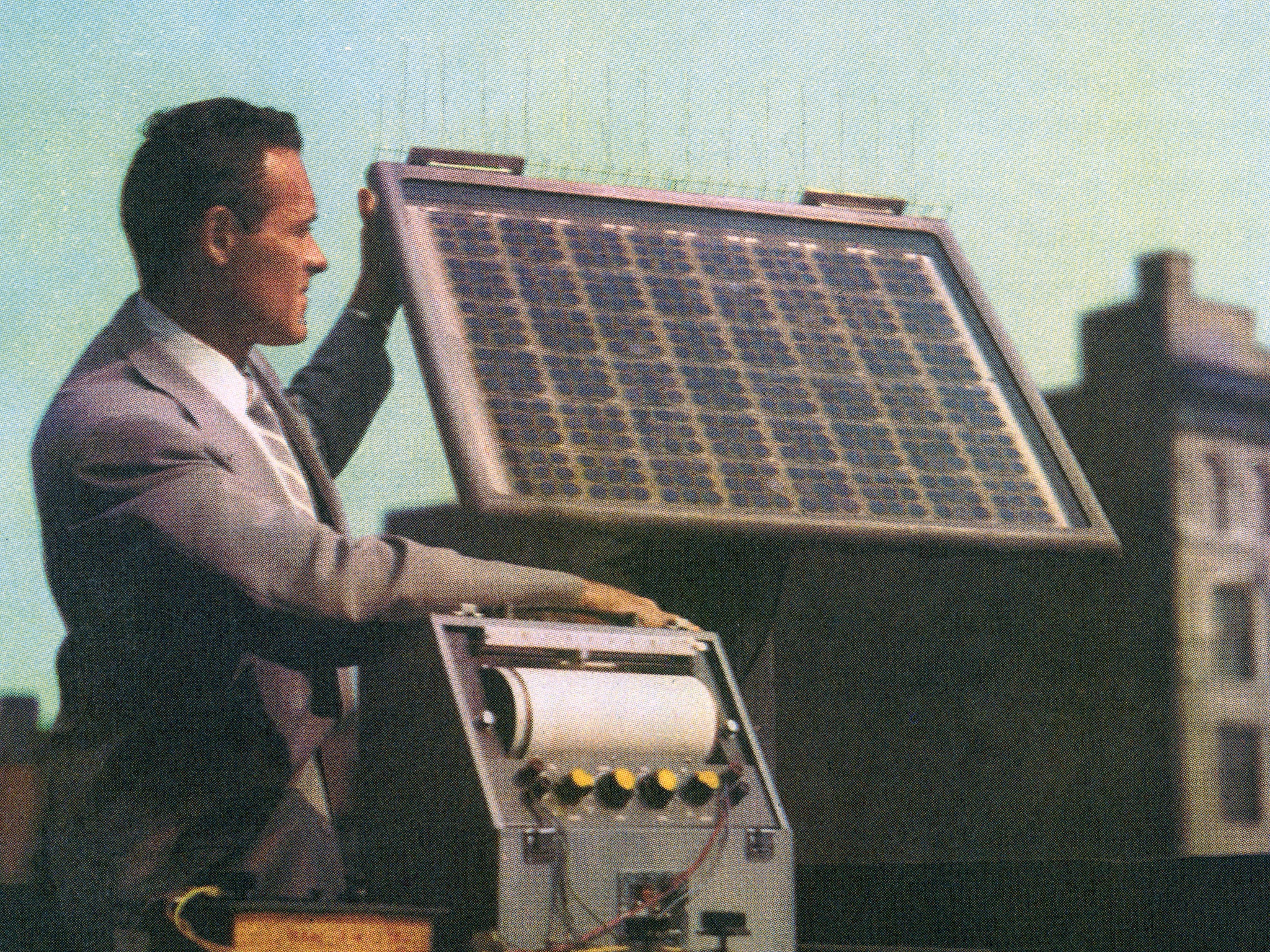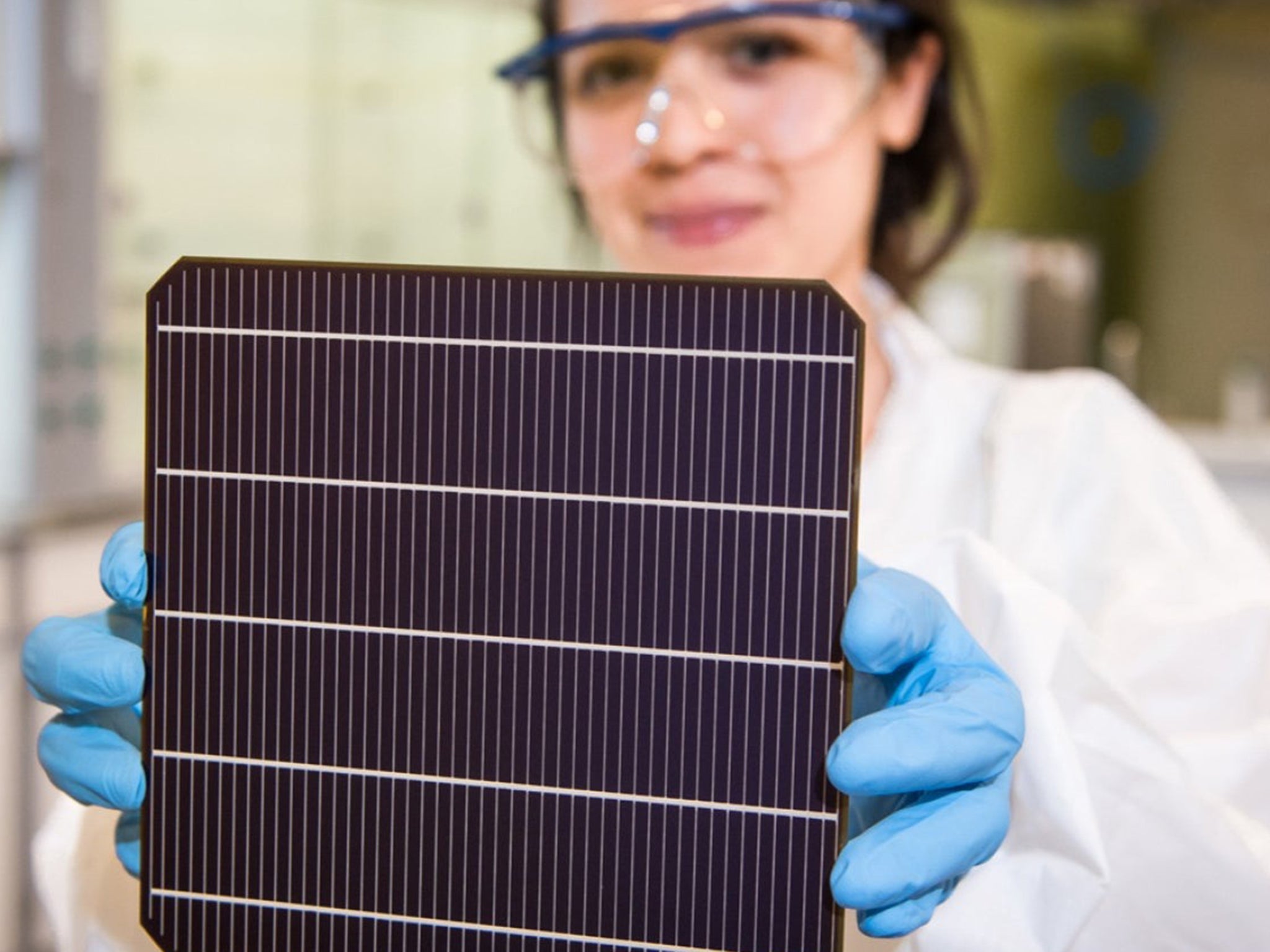Solar energy could hold the answer to a bright future
The sun delivers enough energy every 88 minutes to power our lives for a whole year. So why don’t we use it more, asks Steven Cutts


There is a novel by the late, great British visionary Arthur C Clarke entitled The City and the Stars. Somewhere in his winding narrative, Clarke pauses to consider the nature of a perfect machine and reaches the following conclusion: no machine may contain any moving parts.
Sixty years later, Clarke’s message is still valid. Moving parts are an anathema to perfection. They create dust, wear and the gradual loss of precision. In the end and by its very nature, a machine that is built around moving parts will always let you down.
Needless to say, the electric car is the sort of invention that Clarke would have fully approved of. Whereas a conventional petrol-driven engine contains several hundred moving parts, a modern electric engine can manage with less than 10. Right now, an awful lot of people make a living by changing the exhaust pipes on a car. In fewer than 10 years, every new car in this country will have no exhaust and very few moving parts.
Even accounting for the perceived efficiency gains of electric vehicles, the amount of energy needed to drive a nation’s car fleet is going to be substantial. Some experts believe that the missing gigawatts can be found in the sun.
Every 88 minutes, the sun delivers enough energy to the Earth to provide all of mankind’s needs for a year. If we can harness just a tiny fraction of this power, all of our energy problems would be over. Better than that, modern photovoltaics panels come close to realising the ideals described but Arthur C Clarke. They generate power directly from the sun and produce no pollution. As a student, I saw them as a token gesture to the environmental movement, not a mainstream source of electrical power. I was wrong. Wind now provides more than 30 per cent of power in the UK. Solar power is some distance behind wind, coming in at just under 4 per cent but the rate of growth in solar is much faster than most other modalities.
Not so long ago, nobody could afford a solar panel on their roof unless they had support from the government. Then, a few years ago, western governments began to downgrade government subsidies for solar power. The green movement was livid but, in a way, the withdrawal of government subsidies was pivotal in the history of solar power. The manufacturers had dropped the asking price for a photovoltaic panel so dramatically that it barely needed cash incentives to sell them.
The first solar cells were developed in the 1950s and had an efficiency of about 5 per cent. By the 1970s, things had improved with about 10 per cent of solar energy being converted into electrical power, although the panels themselves were hopelessly expensive. Ten years ago, solar panel manufacturers were concentrated in Europe and Japan but times change and the rise of China has driven down costs at a phenomenal pace. A technology that was once exotic is now seen as mundane.
That been said, the game’s not up for European PV manufacturers with a number of hi-tech start ups looking at solar power here in the UK. Oxford PV is a small hi-tech spinoff from Oxford University and it’s close to manufacturing a new and innovative product that might just gain them an edge. It looks set to be more expensive than the average panel, but is able to compete on percentage efficiency.

Chris Case is the chief technology officer at Oxford PV and is evangelical about the potential of solar. “Solar is mature enough not to require subsidies but what we really need is to remove the impediments to installation. Soft costs can be two to three times the cost of the panels.”
Oxford PV incorporates a material composition called perovskite into their panels, which they believe will increase the efficiency of the cells. In time, Case believes it could become the mainstream photovoltaic panel and if you’re prepared to believe his predictions for the field as a whole, this is quite a claim.
“PV is now cheaper than wind. Ten years ago, that just wasn’t the case. By 2030, 30 per cent of global power could be derived from the sun and by 2050 this figure may be greater than 50 per cent.”
88 minutes
The time it takes for the sun to deliver enough energy to power mankind for a year
I can remember reading about global warming as a kid and thinking that it was probably going to happen but that nobody would act on it. This isn’t the case. For a relatively novel source like solar to replace half of our energy needs would be truly astonishing.
Payback with current technology is about seven years but this figure could conceivably fall to five years with the next generation of solar panels. The economics are PV are more complex than they initially seem. Supposing you want to install solar panels on your roof. In practise the price of the cell is only 12 per cent of the cost. Manufacturers of the actual cells are continuously trying to drive down cost, but as Case points out, the benefits are finite. “If the cost of each cell were to fall by 20 per cent then the final cost of installation would only fall by 2.4 per cent. In contrast, a 20 per cent efficiency improvement in each cell will increase output by 20 per cent and reduce costs on a per watt basis of more than 17 per cent.”
A solar cell that is augmented with perovskite picks up energy in the blue part of the electromagnetic spectrum that existing silicon-based panels fail to absorb. This additional absorption increases the proportion of solar energy that can be converted into electrical power. Whilst Oxford PV expects their cell to be more expensive than mainstream rivals (in the first instance, it’s expected to come in at twice the cost) there are some applications where this superior performance might give them the edge.

If you install solar panels on the roof of your house, it will cost you money but it ought to be able to save you money too. In time, your electricity bill will fall with some countries actually allowing you to sell power from your own roof top back to the national grid.
Other countries are going further still. As of 2020, all new homes in California will come with panels as standard. If you’re reading this as a green activist, this probably sounds quite positive but there is a down side to every policy. This kind of legislation is bound to cost money with some people suggesting that the price of a new home will increase by as much as $10,000. For a society already plagued by a mounting housing crisis, the additional bills associated with solar power won’t always be popular.
PV is now cheaper than wind. Ten years ago, that just wasn’t the case. By 2030, 30 per cent of global power could be derived from the sun and by 2050 this figure may be greater than 50 per cent
Case reminds me that there are other problems associated with home solar, some of them completely independent of the actual technology. “The real impediment to use may be soft costs maybe twice the cost of the actual panels.”
In fact, costs can also vary between nations. Case believes that the US has one of the highest costs of installed PV. A number of permits are required and permissions that can be lengthy and complex. All of these things discourage people from installing new panels. “US permissions amount to $2 to $3 per watt whereas the panel cost is more like $1 per watt.” Whereas further reduction in panel manufacturing costs would be helpful, changes in legislation might do more to increase uptake.
Others find themselves put off by the aesthetics. Not everybody feels comfortable with a home that looks like a prop for a sci-fi movie. It is now possible to fashion a photovoltaic panel to make it look like an ordinary roofing tile, but this costs money.
One of the first people to understand photovoltaic science was the American engineer William Shockley, who was actually born in London in 1910 and went on to manage the Bell Labs in New Jersey. It was an achievement that would later win him the Nobel Prize. Shockley’s early work on PV science suggested that there was a fundamental limit to the efficiency of any solid state device’s Shockley-Queisser limit.

In summary, it’s extremely difficult to obtain more than about 33 per cent efficiency from a solar cell and most silicon-based cells run at about 20 something per cent. However, Oxford PV group believes that their own panel will be capable of more than 35 per cent efficiency. Part of the reason for this is their use of perovskite. While there are several companies around the world now looking at perovskite, Oxford PV believes that they are one of the leaders with about 300 patents in this area, which is about a third of all the patents in the world.
Some years ago, production was dominated by Europe and Japan but more recently, production has shifted to China with countries like Malaysia and Vietnam also making their mark. This process has been associated with an 80 per cent reduction in the unit cost of a solar panel, but there’s a downside to making PV in remote, low-cost countries and then shipping them back to Europe. About 20 per cent of the CO2 emitted by a PV panel made in the far east is effectively caused by transporting the panel to Europe.
Oxford PV hopes to begin mass production of their panel this year, with their first factory being in Berlin. Given the paucity of successful British start-up companies it’s a source of personal frustration that they aren’t planning to manufacture in the UK.
Frank Averdung CEO of Oxford PV, is more pragmatic. “We looked around for a suitable location. The German regional development agencies were more helpful and there’s a factory outside Berlin with previous experience of producing solar panels.”
The Germans have been the European leaders in solar panel manufacture for many years now and this has given them the edge in capturing the new investment. To begin with, the capacity of the Berlin plant is relatively modest and for very large scale production there’s potential for building other factories elsewhere.
Hyundai, the South Korean car maker has already augmented an existing hybrid electric car with a solar-powered roof. One of the things that dictates how much power you can pick up for a photovoltaic panel is its area and the cross sectional area of the average car roof isn’t very much. As things stand, the approach doesn’t work particularly well but there are other groups looking to coat most or all of the external body work with PV and if they used a panel with a higher percentage conversion rate then they would do better. Even in bright sunlight, the power output of a solar cell isn’t anywhere near enough to power an electric car in motion but it could play a role in recharging the batteries once the vehicle is stationary. A car that is parked in the open air for several hours a day has at least some potential for recharge.
To a cool-headed engineer, there are still problems associated with solar power but at least some of them are been overcome. What’s impressive about solar – if we compare it to other forms of energy generation – is the sheer speed at which costs have fallen and large scale facilities have been installed. For example, there was about 130 gigawatts of solar power installed in the EU by the end of 2019 with ongoing rapid growth in capability. To put this in perspective, the existing Sellafield B nuclear reactor produces about 1.8 gigawatts of power. Just a few years ago, solar power was only seen as competitive when the price of natural gas was very high. Even a small fall in the price of natural gas could leave the environmental movement despondent. Now the industry is standing on its own two feet and advancing faster than anybody expected.




Join our commenting forum
Join thought-provoking conversations, follow other Independent readers and see their replies
Comments